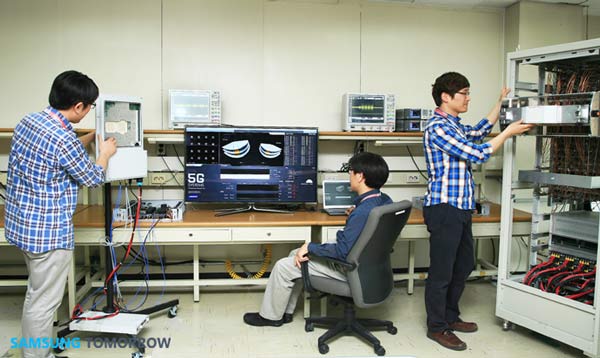While 4G services are only just beginning to roll out around the world Samsung has been busy researching the next generation of mobile communications technology. In recent tests Samsung’s 5G mobile communications devices transmitted data at a speed surpassing 1Gbps over a distance of 2Km. Core to this practical feat is Samsung’s millimetre-wave adaptive array transceiver. However this new technology isn’t expected to become commercially available until the year 2020.

In Samsung’s announcement today, the South Korean tech firm informed us that it has “successfully developed the world’s first adaptive array transceiver technology operating in the millimeter-wave Ka bands for cellular communications.” The importance of this is that this technology “sits at the core of 5G mobile communications system and will provide data transmission up to several hundred times faster than current 4G networks”.
Korea’s Yon Hap News Agency says that the new 5G platform will allow users to download and upload at up to “tens of gigabits per second (Gbps), compared to 75 megabits per second (Mbps) posted by the fourth-generation long-term evolution (LTE) service”.
The technology behind the new 5G cellular networks is facilitated by Samsung’s new adaptive array transceiver technology. The millimetre-wave bands it used had been considered unsuitable by many as they had supposedly unfavourable propagation characteristics over long distances but Samsung’s adaptive array transceiver technology, using 64 antenna elements worked very successfully in these tests.
When this 5G tech is commercialised and available Samsung sees users transmitting “massive data files, including high quality digital movies, practically without limitation” (subject to your data allowance). Earlier in the year Japan’s NTT DoCoMo transmitted cellular data at 10Gbps in its mobile 5G trials using a 24 antenna system.













